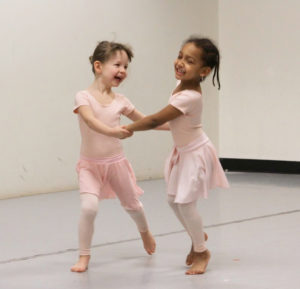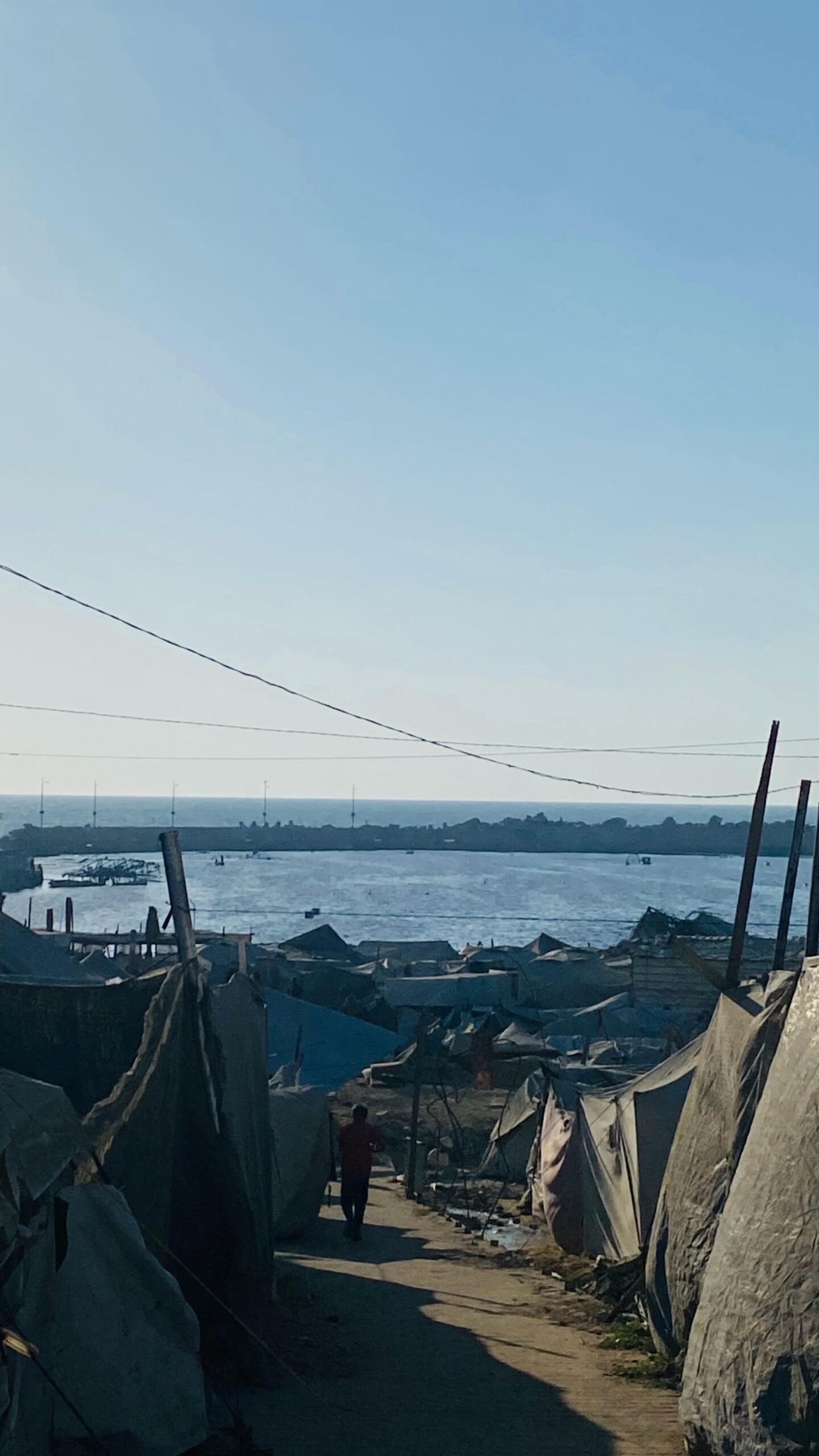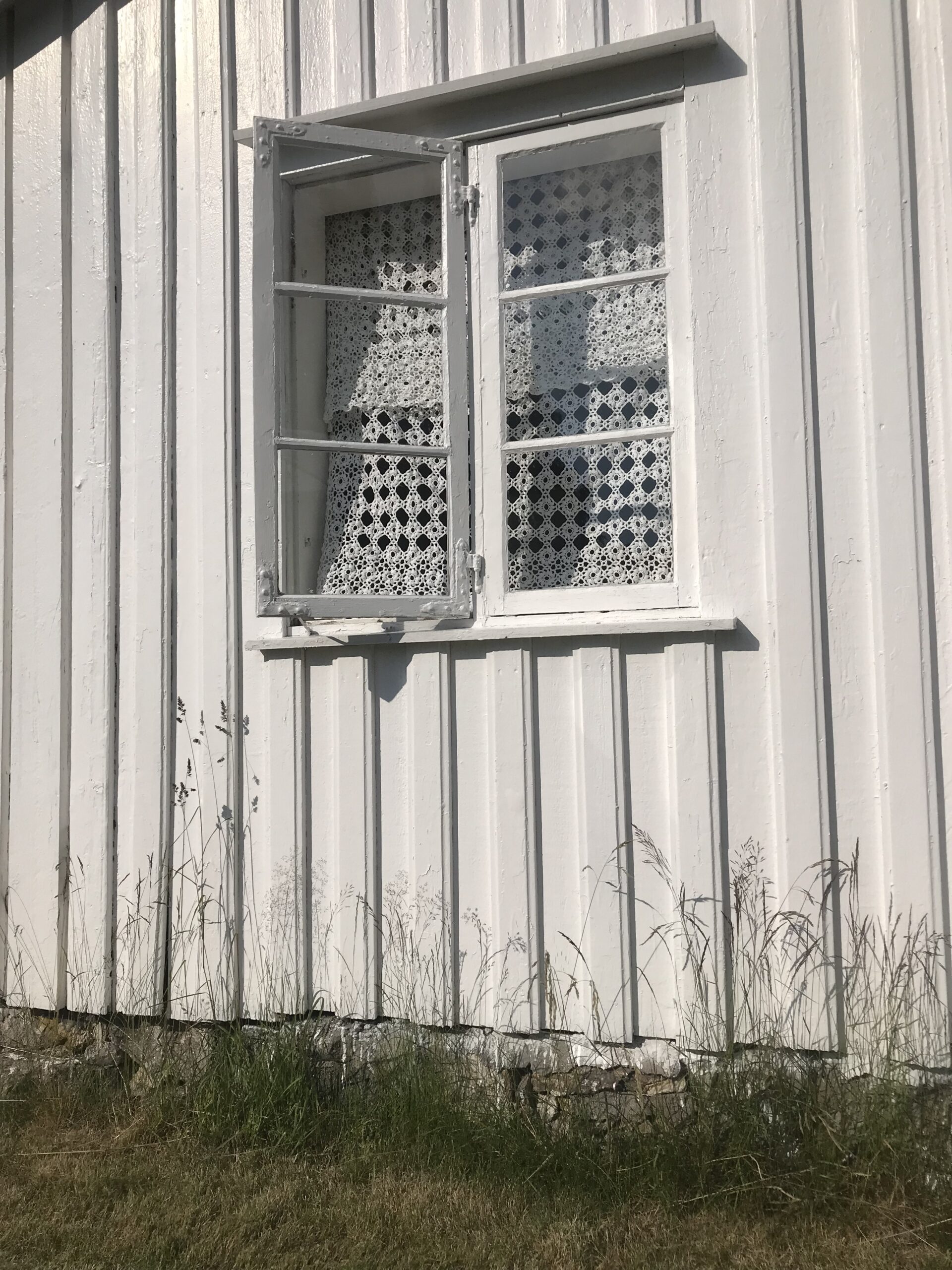
They jog past my window. A clump of three white-haired men, a tight pyramid formation, the front two shoulder to shoulder, the third right on their heels. And I’ll be honest, my first thought is not charitable. “Fucking men,” I think, taking a swig of my coffee. “They never think the rules apply to them. Do they think they’re invincible?”
I sit in my chair in front of the window, mug in one hand, journal open on my lap. I flip to the previous page. According to yesterday, today must be the beginning of the weekend. But what has ended? The days are elastic. Sprawled in front of the window, my dog cannot even be bothered to bark at the retreating runners.
And then, because like so many people I have lost the ability to concentrate, my mind bounces to an article I read by a dance critic, about social distancing and “the choreography of the streets.” How do people know what a six-foot distance looks or feels like? We sit behind the wheels of our cars, alone in a cubicle we sit in front of our computers, and afterward we stand on our yoga mats careful not to stray from its confines, or climb onto treadmills and stationary bikes that will take us nowhere. When do we negotiate space with the people who surround us?
When I taught ballet to six-years-olds, I would spend an entire year teaching them not to clump up together the minute they started moving. It didn’t matter if I had a class of three or a class of twenty. It was always the same process and it always took the whole year—if I was lucky.
Imagine ten six-year-olds in pink leotards in an enormous, empty, room. There’s maybe tape, or little stickers of Ariel from The Little Mermaid, on the floor, marking their places in two perfect lines. I want at least four feet between each little pink leotarded body. The spacing is important because they need to spread out their arms without touching, because the moment they touch one another they want to hold hands. This is a universal truth of six-year-olds.
There also needs to be enough space for mistakes, so that when one goes in the wrong direction she won’t immediately collide with another little body. The possibility of serious injury is zero, but the possibility that such a collision produces tears is probably 99.9%. Fortunately, at this age, tears only last until a distraction is introduced—a sticker, for example, a sheet of which will be set out on top of the piano at the beginning of class for exactly this purpose.
There are two lines of perfectly spaced little girls in their matching pink leotards. If I’m lucky there’s a boy in the class, dressed in a white t-shirt and black tights, or shorts if the parent is squeamish about putting their boy in tights. They face me from their perfectly spaced lines. Mimicking my arms, they encircle and frame their chubby baby bellies.
I tell my two perfectly spaced lines of five to turn to their right so they’re looking at someone’s back. The little girl at the end of the front row, already an anxious sort who wants to do everything just right, raises her hand to let me know that she doesn’t see anyone’s back. Which she wouldn’t because she’s the front of the line. The front of the second row is twirling around and around in place, arms high overhead, totally oblivious.
I tell the hand-raiser she is the leader. I go stand next to the twirler, who has stopped twirling and is now staggering drunkenly, straying far from her Ariel sticker. I put a hand lightly on her shoulder and steer her back into place.
I tell the class that they are going to march to the music. The only thing they have to do is maintain the spacing between them.
“Don’t get any closer to the person in front of you,” I say, and I say it seriously so they understand maintaining this space is serious business. Because it is serious business—right now it’s fall, but come spring they need to be on stage for their recital. They need to be able to move around the stage as a group without a mass pile-up. Parents will be watching.
“Imagine you’re inside a magic bubble,” I tell them. “And if you get too close to the person in front your magic bubble will POP!” This I say with the kind of over-animation that six-year-olds love, the kind that will leave me exhausted after an hour. The plan is to let the first group start marching around the room and have the second line—headed up by the twirling girl who clearly needs to follow someone—join up so they form one long line.
But they can’t do it.
There’s some sort of magnetic pull. All those little pink bodies just glom together and within sixteen counts they’ve gone from perfectly spaced little individuals to one writhing amoeba. And it’s not just that they can’t maintain the spacing. They’re immediately touching each other. Poking the person in front, then hands on that person’s shoulders, then they’re not even behind each other anymore—they’re next to each other, they’re holding hands, they’ve got their arms wrapped around each other, skipping along in a polygamous embrace of five or more bodies. It takes a year of once-a-week discipline to get them to stop doing this, to stay apart, to stay distant. A year to train away their desire to draw close to one another, to touch.
After the six-year-olds, I move to the studio next door to teach the beginning adults. They are no better.
We start at the downstage corner and move on the diagonal to the upstage corner in groups of three or four. I play a waltz. I give the adults simple steps that will propel them through space, but still feel dancerly—the sweeping arms and rocking motion of a waltz, a moment to step into the iconic ballerina pose of an arabesque. I want them to feel the joy and beauty of this basic combination, the movement and music.
But it’s hard. These beginning adults are moving in unfamiliar ways, and trying at the same time to maintain a perfectly spaced formation, a triangle or square. You must be aware of both your body moving through space and where it is in relation to the bodies around you. Proprioception.
It’s a learned skill. I spend an entire year on it with the six-year-olds. Even for the beginning adults, it’s not a sense they call on every day. Their bodies are not often so close to other bodies. That sense has been dulled or lost altogether, so as they waltz along this diagonal path across the studio, most have no sense of how close or far they are from the bodies moving around them. There are collisions, always.
And so I sit by my window, sipping my now-tepid coffee, pen poised above another morning’s blank page. My dog sighs. I watch these men shuffle by my window in their tight little pyramid, and after my initial flame of anger ignites and dies back down, I recall class after class of six-year-olds, their joyful innate pull toward one another despite my best efforts to kill it off. My earnest beginning adults, leaping through space they imagine empty only to discover it already occupied by another body. The confusion and surprise when their flailing arms smack another student. Maybe the jogging men are similarly unaware: enjoying their moment of embodiment, the push of each footfall against the pavement, the bite of spring air against bare legs, the ecstasy of being a body alive and propelling itself through space.
My body is where I live. It’s my home, and as I navigate the street, it’s no different than the studio. Not really. How much space I take up, my self in relation to the selves around me, the push and pull of proximity, the choreography and timing of paths crossing. Our spacing.
Liesl Swogger's work has appeared in Burrow Press Review, The Writer's Chronicle, and Asylum Magazine. She is currently working on a novel, and collaborating with her brother, illustrator John Swogger, on a graphic memoir.
Photo courtesy of BalletNova Center for Dance.




